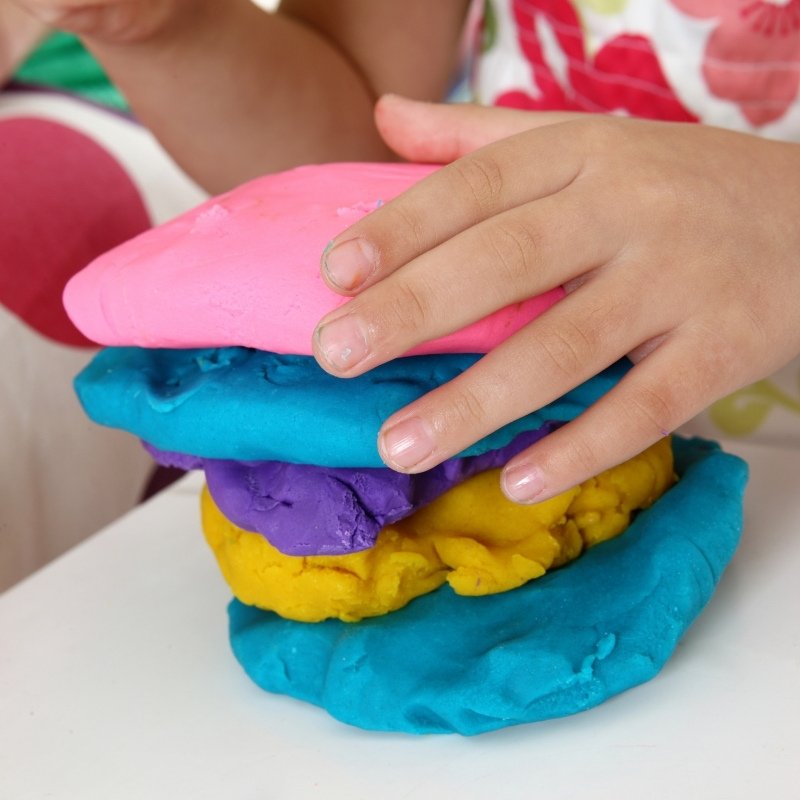
How to Choose Toys For a Child Who is DeafBlind
In a world that is increasingly accessible, it is natural that we would expect play opportunities to be inclusive to all children. However, this is not always the case, and we still have a way to go before play activities are accessible for all.
For example, think about how many toys or pieces of play equipment depend on using the five senses. They often become much more difficult to enjoy if you have one, or even two of those senses impaired.
For children who are DeafBlind, it is not just about the amount of sight or hearing they may have, it’s the combined impact of having more than one sensory impairment.
What is DeafBlindness?
DeafBlindness is far more common than many people realise. Around 400,000 people are affected by sight and hearing loss in the UK and it can vary from mild, moderate, severe to profound.
It might be present at birth, where a child is born with a sight and hearing impairment, which may be due to infections during pregnancy, premature birth, birth trauma and rare genetic conditions. Or it might be acquired, where a child experiences sight and hearing loss slightly later in life, through illness, accident or as a result of ageing.
It’s important to find a good support network as children with hearing and visual impairment may feel isolated as they develop in a world without or with little sound or sight. Advice and support can be found through organisations such as DeafBlind UK or Sense.
However, it is also important to remember that this doesn’t mean that children who are DeafBlind don’t enjoy the opportunity to play and interact with others, test boundaries and explore their surroundings.
Inclusive Play isn't just about Accessibility
When thinking about the accessibility of play, it is important that play value isn’t lost. Simply being able to do something is not what makes it enjoyable. While children with additional needs may need a little extra support, they also need the freedom to decide what to play and how to go about it.
That is the true nature of play after all; something that is freely chosen, personally directed, and intrinsically motivated.
When planning playtime, if you focus on what a child can do rather than what they cannot, it means they can get the most out of activities that are both fun and accessible.
We should also not forget that if a toy is designed for or enjoyed by a DeafBlind child, then it will be accessible and potentially enjoyable for all children! That’s real inclusivity, because it means that children can play together, whatever their needs or abilities.
Six Play Ideas For Children Who Are DeafBlind
Many toys and play activities including the following, can be enjoyed for those with varying additional needs alongside their peers:
1. PLAY-DOH
Price from: £11.99
Sensory toys like play-doh are great for stimulating the senses, helping children to develop their curiosity, creativity and dexterity.
It also makes a lovely group activity for children to play together and relies on imagination and hand and finger strength more than sight. You could also add scents, such as dried lavender, to give a lovely sensory experience.
Or, mix in small objects like beads to make the texture more interesting to play with.

2. SENSORY APRON
Attach sensory toys such as beads, rattles, fidget toys or bells to a small apron. By wearing the apron, the toys are easily accessible and within reach for children to explore when they are sitting down and equally, if they do not walk yet.

3. SCHLEICH ANIMALS
Price from: £6.99
Small-world toys and collectibles provide a great opportunity for imaginative role play.
As they move animal figures around, children can interact with their surroundings and others, stimulating their creativity.
Fun interaction such as tactile or hands-on sign language, taking turns and exploring objects with others all form the “soft skills” that are required for developing communication.

4. TEXTURED TILES AND MATS
When considering play activities, you can also think about those that can be enjoyed without the senses of sight and hearing.
For example, designers have made playground surfaces that allow children to navigate by feeling the textures of different tiles.
You can use this same concept at home as a great addition to your child’s play, as it offers lots of interesting materials to explore.
Textured floor mats are easily accessible as your child can explore them from sitting, lying down, rolling or crawling.
You can even create your own using tile, floor and carpet samples to create a sensory trail.

5. DINO LAB
Price from: £6.99
Sensory- based science kits like the Dino Lab allow children to explore different properties and textures of different materials.
While your child may need some adult guidance depending on their sight and hearing ability, they will enjoy experimenting with the stretchy, gunky nature of the slime and using touch to dig around and find the fossil.
Investigating and describing the different sensory experiences also helps children to develop their tactile communication.
6. WATER KITCHEN
Household items can provide other opportunities to experiment with textures, smells and tastes too.
For example, you can set up a ‘water kitchen’ – partly fill a washing-up bowl with water and provide plastic containers and utensils for your child to use in the water, then encourage them to experiment with filling up and pouring out water using the containers and mixing with the utensils.
You could also add different materials to explore, such as ice cubes or strips of fabric, or some sensitive dish soap for bubbles.

Conclusion
Children play for one reason – fun! But it is so much more than that, it helps them to develop social skills, foster curiosity, and build their confidence. It can also be a fantastic equaliser between children of different ages and abilities if the opportunities are there.
While more can be done to make play accessible, awareness is improving and there are lots of toys and activities out there that can provide a fun and enriching experience for your child. These don’t have to be specialist toys; there are plenty of affordable options in high street shops if you know what to look for:
- Focus on what your child can do, instead of what they can’t do, when choosing toys. For example, focus on the other senses – touch, smell, and vestibular (movement) – and play opportunities that allow these.
- Look for toys that are age-suitable, not “babyish”. Children will want to be able to play with the same toys as their friends, and with a bit of adapting, this is usually possible.
- Independence is so important for children’s confidence. Toys that can be used without any adult support can help with this, as well as organising the play space in a way that allows your child to choose what they would like to play with.
Of course, every child is different and will have varying likes and dislikes too. You know your child the best, so adjust activities accordingly and experiment with as many ideas as possible to discover what your child most enjoys.

This article may contain links to internal/external content related to our partner. All opinions are our own and all products mentioned have been approved by the Good Play Guide through strict, independent testing processes.



